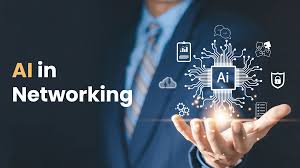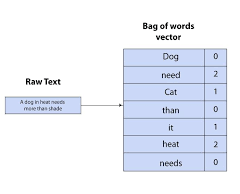AI Tools in Networking: Tailoring Capabilities to Unique Needs
AI tools are becoming increasingly common across various industries, offering a wide range of functionalities. However, network engineers may not require every capability these tools provide. Each network has distinct requirements that align with specific business objectives, necessitating that network engineers and developers select AI toolsets tailored to their networks’ needs. While network teams often desire similar AI capabilities, they also encounter common challenges in integrating these tools into their systems.
The Rise of AI in Networking
Though AI is not a new concept—having existed for decades in the form of automated and expert systems—it is gaining unprecedented attention. According to Jim Frey, principal analyst for networking at TechTarget’s Enterprise Strategy Group, many organizations have not fully grasped AI’s potential in production environments over the past three years.
“AI has been around for a long time, but the interesting thing is, only a minority—not even half—have really said they’re using it effectively in production for the last three years,” Frey noted.
Generative AI (GenAI) has significantly contributed to this renewed interest in AI. Shamus McGillicuddy, vice president of research at Enterprise Management Associates, categorizes AI tools into two main types: GenAI and AIOps (AI for IT operations).
“Generative AI, like ChatGPT, has recently surged in popularity, becoming a focal point of discussion among IT professionals,” McGillicuddy explained. “AIOps, on the other hand, encompasses machine learning, anomaly detection, and analytics.”
The increasing complexity of networks is another factor driving the adoption of AI in networking. Frey highlighted that the demands of modern network environments are beyond human capability to manage manually, making AI engines a vital solution.
Essential AI Tool Capabilities for Networks
While individual network needs vary, many network engineers seek similar functionalities when integrating AI. Commonly desired capabilities include:
- Network Performance Optimization
- Predictive Maintenance and Monitoring
- Root Cause Analysis
- Anomaly and Threat Detection with Intelligent Alerting
- Automated Troubleshooting
According to McGillicuddy’s research, network optimization and automated troubleshooting are among the most popular use cases for AI. However, many professionals prefer to retain manual oversight in the fixing process.
“Automated troubleshooting can identify and analyze issues, but typically, people want to approve the proposed fixes,” McGillicuddy stated.
Many of these capabilities are critical for enhancing security and mitigating threats. Frey emphasized that networking professionals increasingly view AI as a tool to improve organizational security. DeCarlo echoed this sentiment, noting that network managers share similar objectives with security professionals regarding proactive problem recognition.
Frey also mentioned alternative use cases for AI, such as documentation and change recommendations, which, while less popular, can offer significant value to network teams. Ultimately, the relevance of any AI capability hinges on its fit within the network environment and team needs.
“I don’t think you can prioritize one capability over another,” DeCarlo remarked. “It depends on the tools being used and their effectiveness.”
Generative AI: A New Frontier
Despite its recent emergence, GenAI has quickly become an asset in the networking field. McGillicuddy noted that in the past year and a half, network professionals have adopted GenAI tools, with ChatGPT being one of the most recognized examples.
“One user reported that leveraging ChatGPT could reduce a task that typically takes four hours down to just 10 minutes,” McGillicuddy said. However, he cautioned that users must understand the limitations of GenAI, as mistakes can occur.
“There’s a risk of errors or ‘hallucinations’ with these tools, and having blind faith in their outputs can lead to significant network issues,” he warned.
In addition to ChatGPT, vendors are developing GenAI interfaces for their products, including virtual assistants. According to McGillicuddy’s findings, common use cases for vendor GenAI products include:
- Querying IT Systems
- Accessing Product Documentation
- Automating Actions
DeCarlo added that GenAI tools offer valuable training capabilities due to their rapid processing speeds and in-depth analysis, which can expedite knowledge acquisition within the network.
Frey highlighted that GenAI’s rise is attributed to its ability to outperform older systems lacking sophistication. Nevertheless, the complexity of GenAI infrastructures has led to a demand for AIOps tools to manage these systems effectively.
“We won’t be able to manage GenAI infrastructures without the support of AI tools, as human capabilities cannot keep pace with rapid changes,” Frey asserted.
Challenges in Implementing AI Tools
While AI tools present significant benefits for networks, network engineers and managers must navigate several challenges before integration.
Data Privacy, Collection, and Quality
Data usage remains a critical concern for organizations considering AIOps and GenAI tools. Frey noted that the diverse nature of network data—combining operational information with personally identifiable information—heightens data privacy concerns.
For GenAI, McGillicuddy pointed out the importance of validating AI outputs and ensuring high-quality data is utilized for training. “If you feed poor data to a generative AI tool, it will struggle to accurately understand your network,” he explained.
Complexity of AI Tools
Frey and McGillicuddy agreed that the complexity of both AI and network systems could hinder effective deployment. Frey mentioned that AI systems, especially GenAI, require careful tuning and strong recommendations to minimize inaccuracies.
McGillicuddy added that intricate network infrastructures, particularly those involving multiple vendors, could limit the effectiveness of AIOps components, which are often specialized for specific systems.
User Uptake and Skills Gaps
User adoption of AI tools poses a significant challenge. Proper training is essential to realize the full benefits of AI in networking. Some network professionals may be resistant to using AI, while others may lack the knowledge to integrate these tools effectively.
McGillicuddy noted that AIOps tools are often less intuitive than GenAI, necessitating a certain level of expertise for users to extract value.
“Understanding how tools function and identifying potential gaps can be challenging,” DeCarlo added. The learning curve can be steep, particularly for teams accustomed to longstanding tools.
Integration Issues
Integration challenges can further complicate user adoption. McGillicuddy highlighted two dimensions of this issue: tools and processes. On the tools side, concerns arise about harmonizing GenAI with existing systems.
“On the process side, it’s crucial to ensure that teams utilize these tools effectively,” he said.
DeCarlo cautioned that organizations might need to create in-house supplemental tools to bridge integration gaps, complicating the synchronization of vendor AI with customized team solutions.
The Future of AI in Networking
As organizations increasingly integrate AI into their networks, the future of AI tools appears promising.
Regarding GenAI, Frey believes that organizations and network engineers are just beginning to unlock its full potential, though uncertainties remain about its impact. Early implementations suggest it can enhance predictive capabilities, enabling engineers to take proactive measures in addressing network challenges.
“Typically, network operations are reactive. You set things up and hope for the best until an issue arises,” Frey noted.
GenAI’s capacity to execute instructions and implement network changes also holds promise, although McGillicuddy cautioned that vendors may be slow to adopt such interfaces. With thorough guidance, these interfaces can streamline processes and empower users who may lack the expertise to make effective changes.
DeCarlo emphasized the need for AI tools to prioritize integration between security and network management in the future. “Security directly influences network performance. Identifying potential security threats can help prevent outages,” she stated.
Both GenAI and AIOps have immense potential, with many use cases yet to be discovered. As networks evolve, so too will the capabilities required to meet new challenges.
“There are likely applications we have yet to explore, and as networking environments advance, we will need different capabilities than we do today,” DeCarlo concluded.
🔔🔔 Follow us on LinkedIn 🔔🔔













